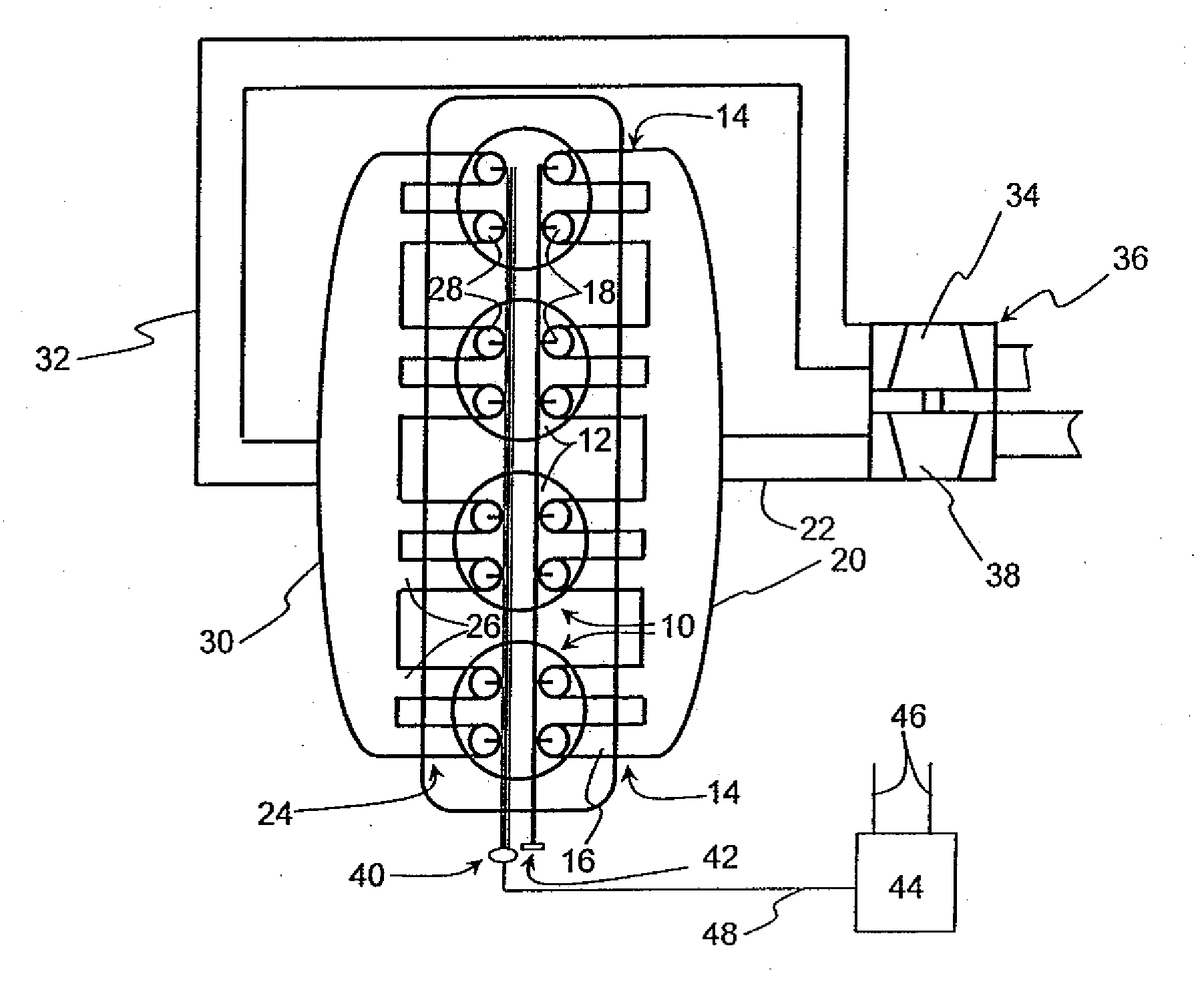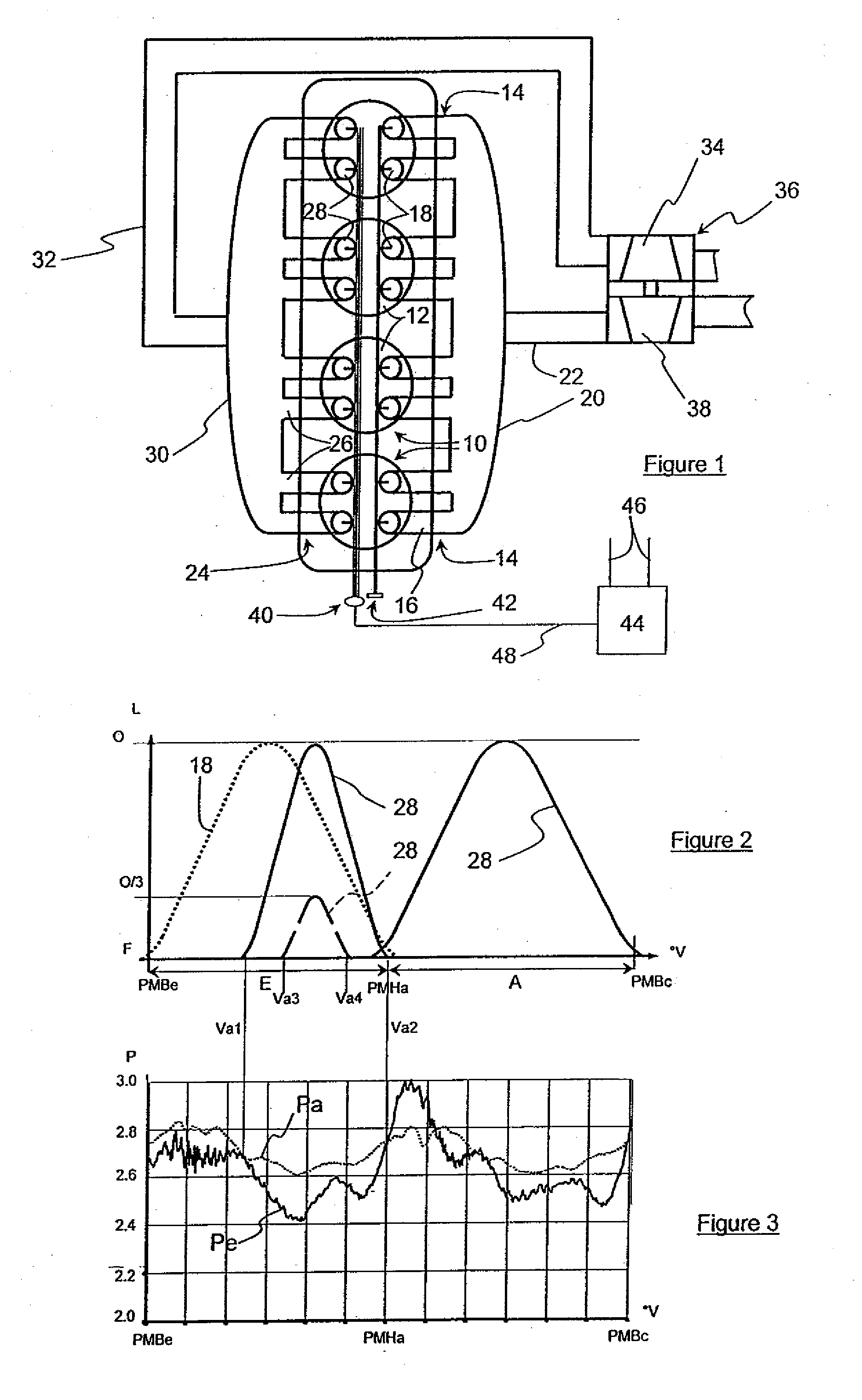Residual burnt gas scavenging method with double intake valve lift in a direct-injection supercharged internal-combusion engine, notably of diesel type
a supercharged internal combustion engine and scavenging method technology, which is applied in the direction of machines/engines, output power, mechanical apparatus, etc., can solve the problems of reducing the shape of the combustion chamber and the progress of the fuel mixture combustion, affecting the combustion efficiency of the engine, so as to reduce the height the spread of the intake valve li
- Summary
- Abstract
- Description
- Claims
- Application Information
AI Technical Summary
Benefits of technology
Problems solved by technology
Method used
Image
Examples
Embodiment Construction
[0023]In FIG. 1, the internal-combustion engine illustrated is a supercharged internal-combustion engine of self-ignition type, notably a diesel engine, working in four-stroke mode with an intake phase A, a compression phase C, an expansion phase D and an exhaust phase E.
[0024]This engine comprises at least one cylinder 10, four cylinders here, in which a piston (not shown) slides in a rectilinear reciprocating motion between a top dead centre (PMH in the figure) and a bottom dead centre (PMB) and delimits a combustion chamber 12 in which combustion of a fuel mixture takes place.
[0025]As it is widely known, this fuel mixture can be either a mixture of supercharged air mixed with recirculated exhaust gas (or EGR) with a fuel, or a mixture of supercharged air with a fuel.
[0026]The cylinder comprises at least one burnt gas exhaust means 14, two here, including an exhaust pipe 16 associated with a shutoff means such as an exhaust valve 18.
[0027]Exhaust pipes 16 end in an exhaust manifol...
PUM
 Login to View More
Login to View More Abstract
Description
Claims
Application Information
 Login to View More
Login to View More - R&D
- Intellectual Property
- Life Sciences
- Materials
- Tech Scout
- Unparalleled Data Quality
- Higher Quality Content
- 60% Fewer Hallucinations
Browse by: Latest US Patents, China's latest patents, Technical Efficacy Thesaurus, Application Domain, Technology Topic, Popular Technical Reports.
© 2025 PatSnap. All rights reserved.Legal|Privacy policy|Modern Slavery Act Transparency Statement|Sitemap|About US| Contact US: help@patsnap.com


